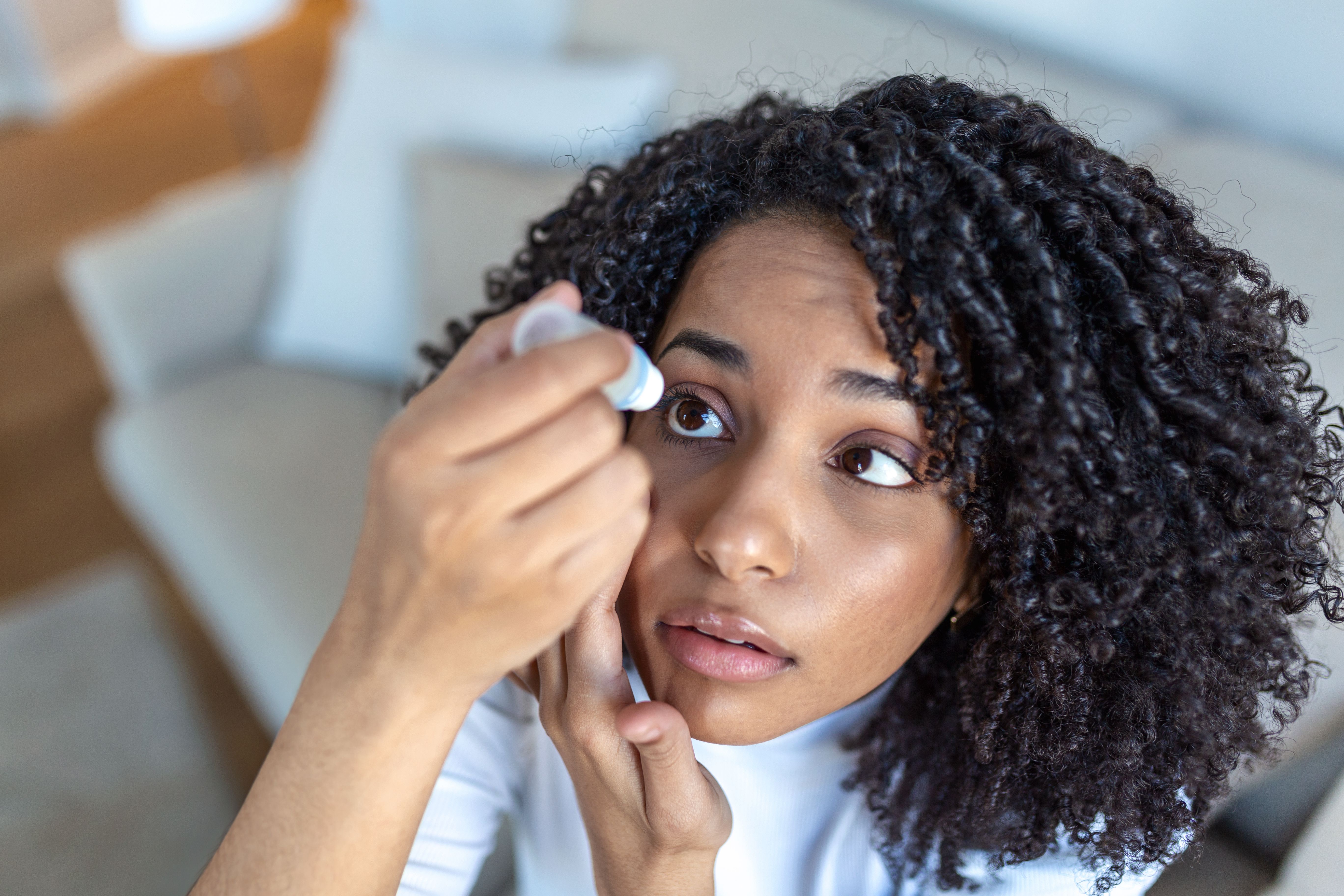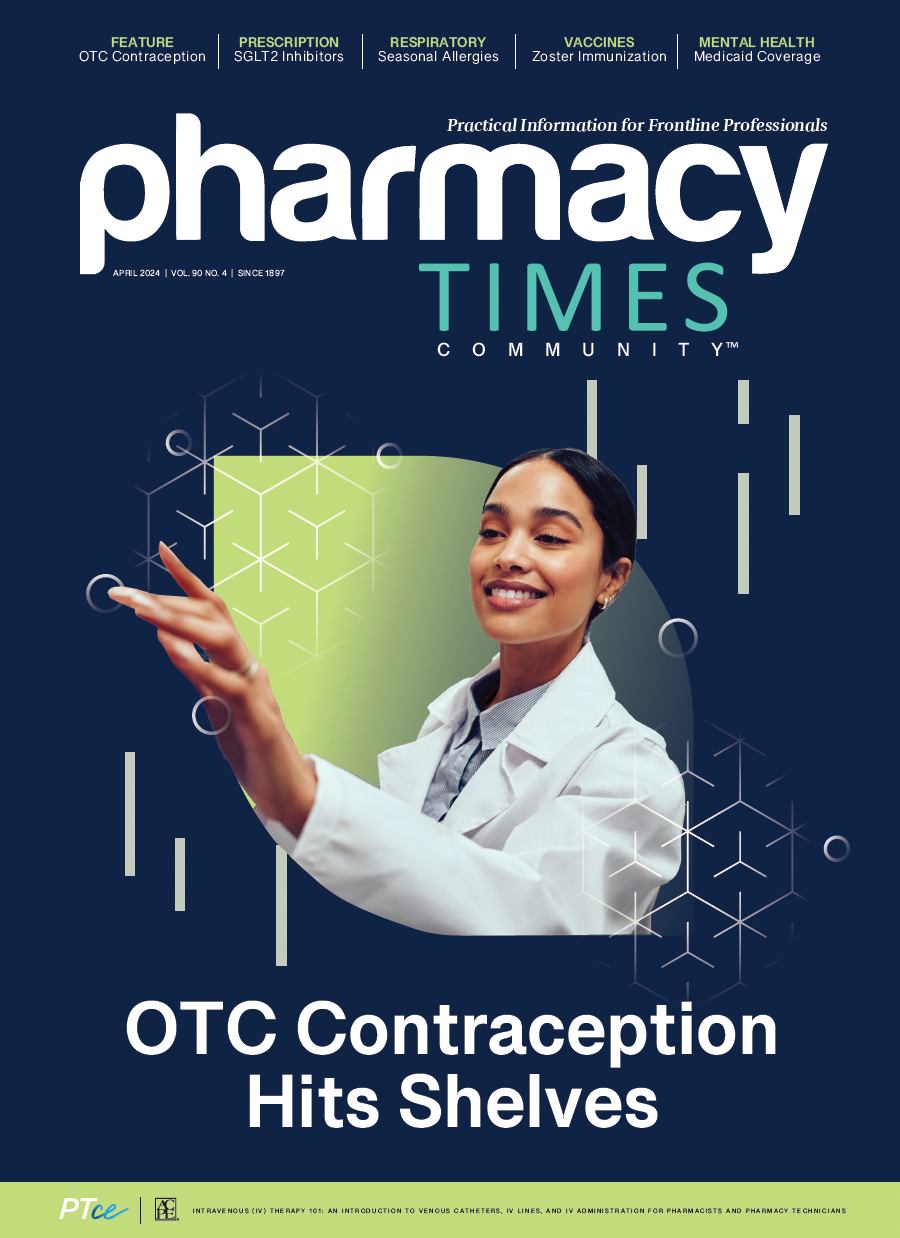CASE 1
Dry Eye Symptoms
RH is a 46-year-old male patient with hypertension, hypothyroidism, and heart failure. He approaches the pharmacy counter requesting assistance with an OTC eye drop to help with symptoms of dry eye.
Q: What products should the pharmacist recommend and what counseling points should be provided regarding appropriate administration?
A: The pharmacist can start by recommending nonpharmacological management options for dry eye, including adequate daily water intake, limiting screen time, and utilizing an air humidifier at home. OTC medications can include artificial tears, which help to lubricate the eye and relieve dryness.1 Artificial tears should be administered as 1 to 2 drops into the eye as needed for symptom relief.2,3 The American Academy of Ophthalmology recommends the use of preservative-free artificial tears for individuals using artificial tears more than 6 times per day because the preservatives can irritate the eye.3 Artificial tears are available under numerous brand names and are available as drops, ointments, and gels. The ointments and gels tend to be longer acting compared with the drops but can cause blurred vision and should be used at nighttime.4
CASE 2
Appropriate Administration
SF is an 82-year-old female patient with chronic kidney disease, heart failure, and chronic dry eye. She has been using lubricating eye drops for many years but has recently been noticing they no longer work as well. She would like to try an OTC eye ointment but is not sure how to apply it.
Q: What counseling points should the pharmacist provide SF regarding the appropriate administration of lubricating eye ointment?
A: The pharmacist should counsel the patient to first wash their hands thoroughly. Once the patient has clean hands, they should pull down their lower eyelid and apply a small amount of ointment about one-fourth inch inside the eyelid. The patient should be educated to avoid touching the eyelid with the tip of the eye ointment container. The pharmacist should inform the patient that blurry vision is a common adverse effect after the use of eye ointment and for this reason it may be ideal to administer at night.4,5
CASE 3
Artificial Tears
LP is a 21-year-old female patient who approaches the pharmacy counter requesting assistance with an OTC eye drop for dry eye. LP explains that she has allergic conjunctivitis and is currently using ketotifen eye drops (Alaway; Bausch + Lomb). Since starting these eye drops, she has noticed her eyes have been drier, and her ophthalmologist recommended that she use OTC artificial tears as needed for relief.
Q: How should the pharmacist counsel LP regarding the use of her eye drops?
A: The pharmacist should emphasize that both eye drops should not be administered to the eye at the same time. The patient should be educated to instill the ketotifen eye drops by tilting her head back, pulling her lower eyelid down and away from the eye with 1 hand, and then squeezing the drop from the bottle into the eye using the other hand. After the drops have been administered, the patient should close her eyes for about 1 minute and press lightly on the tear ducts of the eye. LP should be educated to wait 5 minutes after instilling the ketotifen to administer the artificial tear drops using the same steps as described.5
CASE 4
About the Authors
Deanna Fox, PharmD, is a PGY-2 pharmacy resident at Atlantic Health System in Morristown, New Jersey.
Kylie Helfenbein, PharmD, is a PGY-2 pharmacy resident at Atlantic Health System in Morristown, New Jersey.
Rupal Patel Mansukhani, PharmD, FAPhA, NCTTP, is a clinical professor of pharmacy practice and administration at Ernest Mario School of Pharmacy at Rutgers, The State University of New Jersey, in Piscataway and a transitions-of-care clinical pharmacist at Morristown Medical Center in New Jersey.
Causes of Dry Eye
KW is a 79-year-old female patient with diabetes mellitus, atrial fibrillation, and allergic rhinitis. Her medications include metformin, apixaban (Eliquis; Bristol Myers Squibb and Pfizer), metoprolol tartrate (Lopressor; Novartis), and diphenhydramine (Benadryl; Johnson & Johnson) as needed for severe allergy symptoms, which she has recently been experiencing. She visits the pharmacy with complaints of extremely dry eyes and is wondering whether the condition could be caused by any of her medications. She would also like to know about any OTC products for management.
Q: What should the pharmacist tell KW regarding potential causes and treatment for her dry eyes?
A: The pharmacist should educate KW that certain medications can cause dry eyes, including anxiety and antidepressant medications, blood pressure medications, sleeping medications, and allergy medications. KW is currently taking 2 medications that fall within these categories: Diphenhydramine is an allergy medication and metoprolol tartrate is a β-blocking medication used for high blood pressure. KW can try using warm compresses on the eye to help manage symptoms and can also consider purchasing OTC artificial tear drops. She should be counseled to never stop her metoprolol tartrate and diphenhydramine before first speaking with her doctor.4
References
Boyd K. What is dry eye? Symptoms, causes and treatment. American Academy of Ophthalmology. November 27, 2023. Accessed January 28, 2024. https://www.aao.org/eye-health/diseases/what-is-dry-eye#treatment







